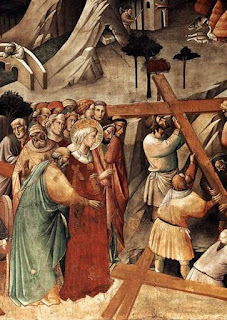You are no doubt aware of three major religions that started in the Middle East: Judaism, Christianity, Islam. There is, however, another religion that began in the Middle East, has up to 1,000,000 current adherents, uses the multi-colored star as its symbol, and was started by a man nicknamed "the mad caliph."
When Caliph Al-Hakim bi-Amr Allah became caliph at the age of 11, no one could have predicted what the future would bring, especially the point at which he declared himself the earthly incarnation of God. To be more accurate, he was declared thus by Hamza ibn ‘Alī ibn Aḥmad, who was preaching a philosophy that was a blend of Isma'ilism (a subset of Islam), Gnosticism, Christianity, Neoplatonism, Zoroastrianism, Buddhism, Hinduism, Pythagoreanism, and any other idea he liked. It was Hamza who initially "recognized" Al-Hakim as God Incarnate.
This was unacceptable to the majority of Shi'a Muslims in the area, but a small group decided to embrace this announcement. Among them was Muhammad bin Ismail Nashtakin ad-Darazi. When he discovered the new religion, he began preaching on its behalf, and started gaining followers. His growing mass of followers motivated him to start calling himself "The Sword of Faith." This nickname, however, was a sign of a major Druze sin: arrogance. (Consider the irony of "arrogance" being a sin in a religion founded when someone claimed to be God Incarnate.) This led to a clash with Al-Hakim, who said "Faith does not need a sword to aid it." Unfortunately for ad-Darazi, he did not take the hint and kept annoying the "incarnation of God," and he was ultimately labeled a heretic and executed in 1018.
This brings us to the second irony: the Druze religion is named after the early preacher who was executed for being a heretic. To be fair, there are other theories: that it derives from Arabic dārisah ("she who studies") or the Persian Darazo ("bliss"). In early texts, they refer to themselves as muwaḥḥidūn ("unitarian"). One of the earliest references to "Druze" comes from Benjamin of Tudela, who encountered them in Lebanon in 1165.
When Al-Hakim disappeared mysteriously in 1021, his successor and son persecuted Druze adherents. This drove them underground. Druze are scattered worldwide, but are mostly in Lebanon, Syria, and Israel. They frequently will publicly adopt other religions but practice Druze secretly. Druze in modern Israel number about 150,000, and are the only Arab group conscripted into the Israel Defense Forces; they sided with Israel in the 1948 war. When the Israel Knesset in 2018 established a law that Israel was a Jewish state, the Druze were appalled, claiming it made them second-class citizens in a country where they had shown undying loyalty.
But by and large, the Druze try to get along with everyone. Even in 1165, Benjamin Tudela wrote that they "loved the Jews."And speaking of Benjamin of Tudela: interesting guy; a Spanish Jew who traveled the known world and wrote it all down. We'll look into his travels tomorrow.



















